 |
|
Hong Kong environmental artist Monti Lai Wai Yi has been planting rice since 2014 and regards farming as a research method. |
 |
|
Hong Kong environmental artist Monti Lai Wai Yi has been planting rice since 2014 and regards farming as a research method. |
Monti Lai Wai Yi, born in 1977, is a Hong Kong environmental artist and farmer. In 2004, she graduated with a Bachelor of Fine Arts degree from RMIT University in Australia (co-organized by the Hong Kong Academy of Arts), and in 2011 obtained a Master of Arts and Design degree from Aalto University in Finland, majoring in Environmental Art.
Lai is specializing in site-specific creation, and her works show caring and deep observation of nature. Her early works focused on exploring the conflict between man and nature. Since participating in the Lai Chi Wo Restoration Project in 2014, Lai start farming and planting rice in different places in Hong Kong. She regards farming as an artistic research method and uses plants as a creative medium.
Lai has held solo exhibitions in Hong Kong and Finland and has participated in many group exhibitions around the world. Over the years, she has actively promoted local art education. Since 2003, she has planned and held several environmental art workshops. "Touching the Earth - Environmental Art Workshop at Lai Chi Wo", a program led by Lai, has been awarded the Certificate of Merit in Hong Kong Art Development Awards 2016.
In a greenfield, Monti, who was wearing a red farmer's hat, could be seen at a first glance. She smiled and waved at the researcher. She was tanned and thin and walked over with water shoes. The 2021 Mid-Autumn Festival has passed, but the sun is still hot, over 32 degrees Celsius at noon. We sat in the farm shed to rest, but still, it was too hot, so we went under a tree to cool off, and interviewed the cool breeze.
Monti loved to draw since she was a child, but she modestly said that her painting skills were not very good, she just had a desire to draw /record when she saw beautiful things at that time. "It may be an aesthetic awakening, for example, I think this sailboat is so beautiful, I want to draw it. My deepest memory (as a child) is that my drawing in the drawer in kindergarten was confiscated by the teacher.”
Monti is one of the few local artists who has been focusing on environmental art since schooling, especially when "environmental art" was still a new concept in Hong Kong 18 years ago.
The researcher asked, "Did you already want to do environmental art when you were studying at art school?" Monti answered quickly, "Yes." She explained that when she was in Year 2 of art school, there was a project carried out at Kadoorie Farm in Tai Po, she felt that this was exactly the artistic direction she was looking at.
At that time, Monti renovated an abandoned pavilion (security pavilion) in Kadoorie Farm and divided her creation into four stages to show the changes of the four seasons. She once said in a media interview [1] that she hopes to continue the life of this abandoned house by decorating the pavilion, and at the same time hopes that it can arouse viewers to reflect on the relationship between man and nature: "People like to wear camouflage clothes because they want to get closer to nature to a certain extent. I wrapped the pavilion with camouflage cloth, hoping that the audience can reflect, is it possible to walk into nature simply in this way?”
 |
|
“Disguised Relationship”, Monti Lai Wai Yi, Installation, Mixed media, 224cm x 183cm x183cm, 2003 |
Monti’s graduation works are elves wrapped in camouflage cloth. She regards these small people like messengers, who are responsible for the task of transmitting information, and anyone who can see them is the recipient. "It's in camouflage, so it may hide in the background that not everyone can see it. I sometimes think to myself that the problem of the environment has always been there, but some people are like, 'I can't see you, you can't see me.’ " She uses elves to bring out the human's blindness to environmental issues.
Over the years, elves have appeared in Monti's creations from time to time. Sometimes they appear in groups of hundreds, sometimes they travel together in small groups, and sometimes only one or two elves are wandering in the world freely.
 |
|
"Here they come again”, Monti Lai Wai Yi, Installation, Mixed media, Dimension variable, 2003-2007 |
 |
|
"Here they come again”, Monti Lai Wai Yi, Installation, Mixed media, Dimension variable, 2003-2007 |
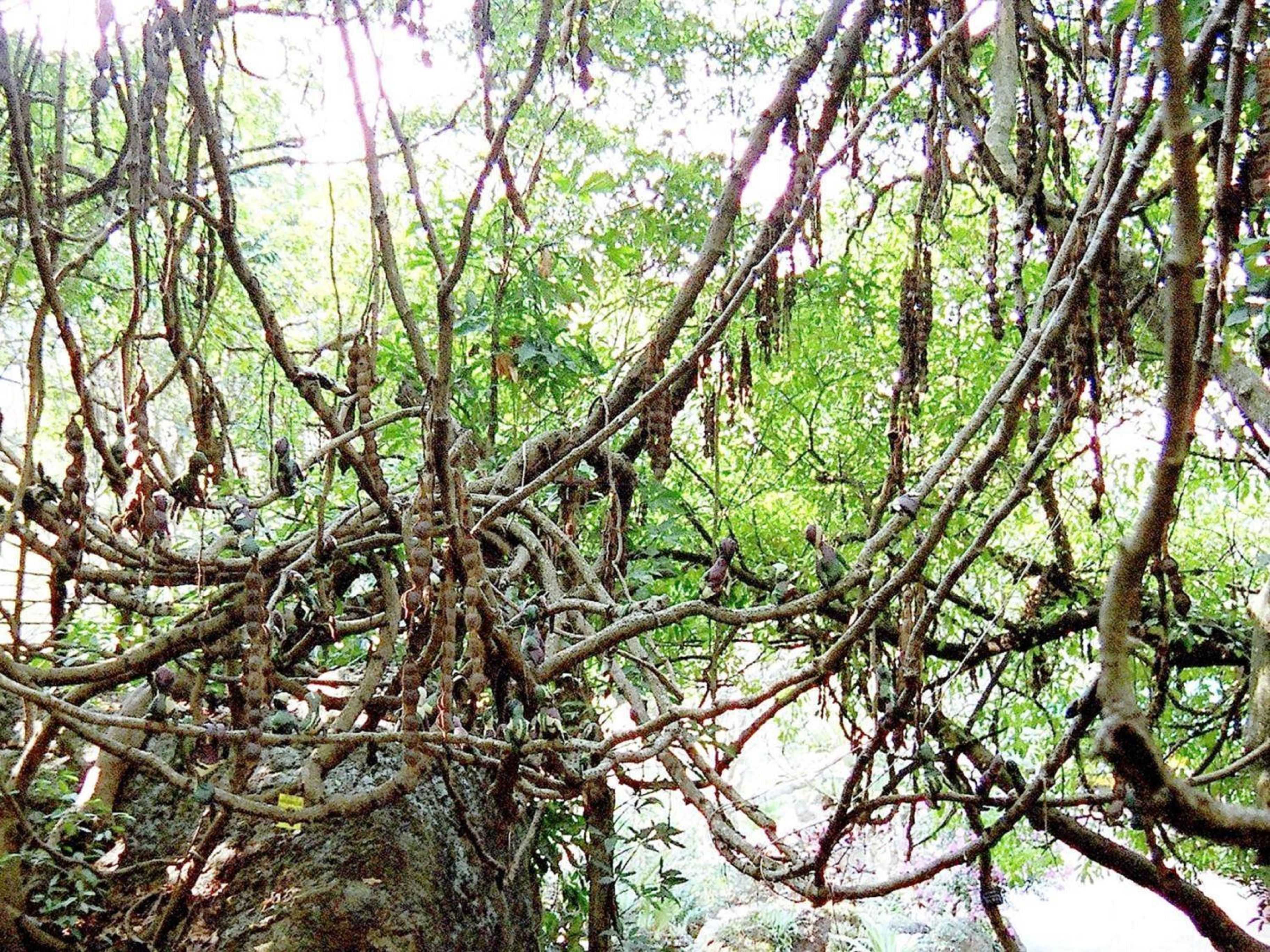 |
|
"Let’s play together”, Monti Lai Wai Yi, Installation, Mixed media, Dimension variable, 2004 |
 |
|
“Hello! Is anybody there?” Monti Lai Wai Yi, Installation, Polymer Clay, Dimension variable, 2008 |
 |
|
“Hello! Is anybody there?” Monti Lai Wai Yi, Installation, Polymer Clay, Dimension variable, 2008 |
 |
|
“Hello! Is anybody there?” Monti Lai Wai Yi, Installation, Polymer Clay, Dimension variable, 2008 |
 |
|
"They came from the stars”, Monti Lai Wai Yi, Site-specific Installation, Salt dough, Size variable, 2014 |
 |
|
"They came from the stars”, Monti Lai Wai Yi, Site-specific Installation, Salt dough, Size variable, 2014 |
Monti is good at creating locally, that is, based on local conditions, carefully observing and feeling the exhibition space, and then developing her creativity according to the characteristics of the site, such as the installation art of the pavilion, or the elves sitting on the tree. Later, her works added elements of art intervention [2], inviting others to participate in the creation, and intervening in society, community, and daily life.
Monti shared that she started experimenting with art intervention when she was studying in Finland, and this journey has become one of the important watersheds in her artistic career. “At that time, there was a lot of self-time, and I tried a lot of different things. I also added a form of intervention in my artworks, to intervene in the audience or place, not only site-specific but also added a 'man' element."
Monti created the work "Smile:)" and made a stamp with the word "Smile:)" directly. She visited different snowfields in Finland to stamp, and try to make people smile. She embarrassedly recalled: "Some classmates in Finland told me that I asked people to “smile”, it was a little offensive... Because winter in Finland lasts for half a year and even longer, the locals don’t think snow is a romantic thing. There were a lot of suicides, and also problems of excessive drinking and depression. But at that time, I felt that the weather made me a little depressed, so I wanted to make work to respond to that time, I also wanted to remind myself or share it with everyone, "Let’s smile."
 |
|
“Smile:)” Monti Lai Wai Yi, Art Intervention, Snow, Helsinki(Finland), 2008-2009 |
 |
|
“Smile:)” Monti Lai Wai Yi, Art Intervention, Snow, Helsinki(Finland), 2008-2009 |
 |
|
“Smile:)” Monti Lai Wai Yi, Art Intervention, Snow, Helsinki(Finland), 2008-2009 |
In addition, she also created the "Planting" series, collecting daily newspapers and folding paper roses to record each day. On her website, she explained her creative concept like this: "Every flower blooms from the hand, they contain the joy, anger, sorrow, and happiness of people all over the world every day." The "Planting" series consists of three parts: art intervention (2008-2009); installation (2009) and public participation installation (2010).
 |
|
“Planting”, Monti Lai Wai Yi, Art Intervention, Newspaper, 2008-2009 |
 |
|
“Planting I”, Monti Lai Wai Yi, Installation, Dimension variable, Newspaper, 2009 |
 |
|
“Planting II”, Monti Lai Wai Yi, Participatory work, Dimension variable, Newspaper, 2009 |
 |
|
“Planting III- Let them grow”, Monti Lai Wai Yi, Interactive Installation, Newspaper, 2010 |
Looking back at Monti's 18 years of creation, it is not difficult to find that she used artificial objects (camouflage cloth, newspapers, seals) to create environmental art at first, and gradually tended to use local natural materials. For example, the work "In memory of a twig" (2008), was inspired by a branch that was picked up on the street by chance[1], and Monti was attracted by the beauty of the branch, so she cast the branch and created the work.
 |
|
“In memory of a twig I”, Monti Lai Wai Yi, Installation, Polymer Clay, Dimension variable, 2008 |
 |
|
“In memory of a twig I”, Monti Lai Wai Yi, Installation, Polymer Clay, Dimension variable, 2008 |
 |
|
“In memory of a twig II”, Monti Lai Wai Yi, Installation, Polymer Clay, Dimension variable, 2008 |
 |
|
“In memory of a twig II”, Monti Lai Wai Yi, Installation, Polymer Clay, Dimension variable, 2008 |
In 2010, Monti started a creation series about leaves, and in the next ten years, she still used leaves as materials from time to time, establishing a deep and unique connection with leaves. Monti was working as an artist-in-residence at Lingnan University in Hong Kong, during which she was chased by a dog. This experience reminded her of a rather special trait of herself—since she was young, she was often chased and bitten by dogs.
"When I was bitten by a dog for the first time when I was a child, my family didn't take me to see a doctor. My aunt and my parents picked some raw herbs from the mountains, chopped them with sugar, and applied them to my wound. My dad often told me that my grandma is a good herbalist, but my dad didn’t learn it. So I think in my family, it has some connection with leaves and plants.”
This memory inspired Monti to start collecting leaves in Tuen Mun, the community where the campus is located, and to learn about their colors, textures, and stories. "This incident reminds me that leaves have a healing effect on people, and leaves are even a kind of thing that can save people. I feel that besides the relationship between plants and people, there are many other aspects. can be connected."
The above three-leaf creations were all exhibited in Monti's solo exhibition "The Color that Remains" in 2010 [3]. Hong Kong artist and curator Tang Ying Chi described[4], that it is a "very peaceful" exhibition, and the use of leaves as a pigment makes the color of the exhibition more green and brown. As for Monti's creative method, Tang also affirmed:
"Lai Wai Yi can be called an environmental artist. This is a very new creative direction. Simply speaking, it is concerned with environmental issues. In general creations, it will directly mention how to protect the environment, or tell the various things that are destroyed in the environment. Lai Wai Yi, however, adopted a more gentle approach, starting from an experiment, not making too many evaluations, and opening up topics for public discussion. Instead of using the topic of concern as a means to obtain echoes, the pursuit of substantive content is also an issue of artistic social responsibility that contemporary creators need to face. Artists need to respond to contemporary issues and at the same time accept the challenges posed by these issues to rethink their creative methods. "
Monti found that leaf pigments are a good entry point to let the audience know what the work is or to let the public be interested in knowing what art is. She shared that she accompanied her father to see a doctor once, and while waiting for the doctor, someone asked what his daughter's job was in the chat, "My father was able to tell that person, she used leaves for color! So I think it's very simple. Well, I just want to bring this concept to different places and communities, because as long as I use leaves for color, people's imagination will even be greener.”
In 2011, Monti launched the "Leaves of Words" public participation project. She taught on the spot how to make pigments from leaves, and invited the public to participate in the creation, make their postcards, and write their visions on the postcards. Participants can also leave an address to receive postcards created by others. In four years, eight events were held in different communities in Hong Kong.
Creation location:
West Kowloon Water Promenade, 2011
The Salvation Army, Tai Wo Hau, 2012
Jockey Club Inclusive Arts Studio, 2013
Ping Yeung School, Ping Che, Ta Kwu Ling, 2013
Hong Kong Park, 2013
Domain, Yau Tong, 2014
Lingnan University, 2014
Hong Kong Cultural Centre, 2014
In 2007, the Hong Kong government reintroduced the Northeast New Territories development plan to convert the agricultural land in Kwu Tung North, Fanling North, and Ping Che/Ta Kwu Ling into residential and commercial areas, arousing opposition from residents and the public. Monti visited Tin Ping Shan Tsuen and Shek Wu San Tsuen, which were included in the development of Fanling North, collected leaves, and created a series of "One Square Foot". In the solo exhibition of the same name in 2012, Monti wrote in the exhibition leaflet, "If everyone can establish a unique and intimate relationship with the natural environment, I believe, the world we live in today would be very different.” [5]
 |
|
“One Square Foot - Tin Ping Shan”, Monti Lai Wai Yi, Water, leaves, gel medium, mixed media on wood, a set of five, 30.5cm x 30.5cm each, 2012 |
 |
|
“One Square Foot –Shek Wu San Tsuen”, Monti Lai Wai Yi, Interactive Installation, Water, leaves, wood, cotton voile and bamboo, Size variable, 2013 |
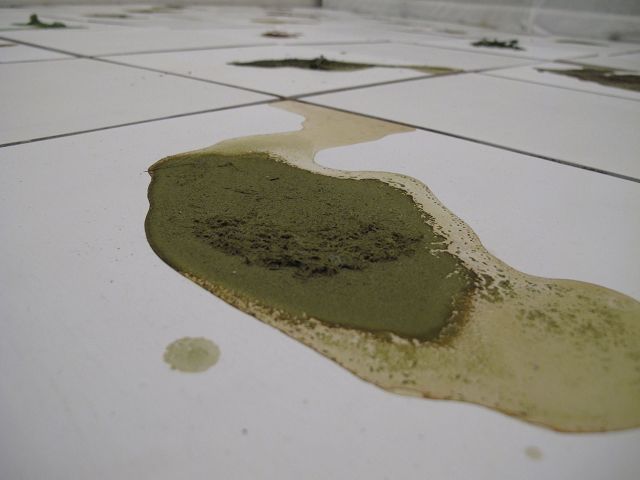 |
|
“One Square Foot –Shek Wu San Tsuen”, Monti Lai Wai Yi, Interactive Installation, Water, leaves, wood, cotton voile and bamboo, Size variable, 2013 |
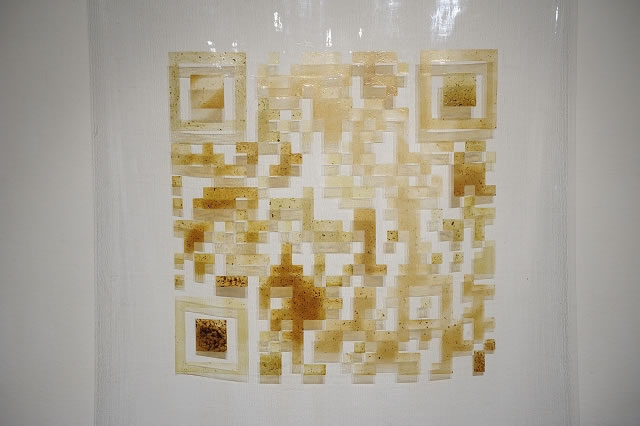 |
|
“Village Watch”, Monti Lai Wai Yi, Water, leaves and mixed media, 183cm x 304cm, 2013 |
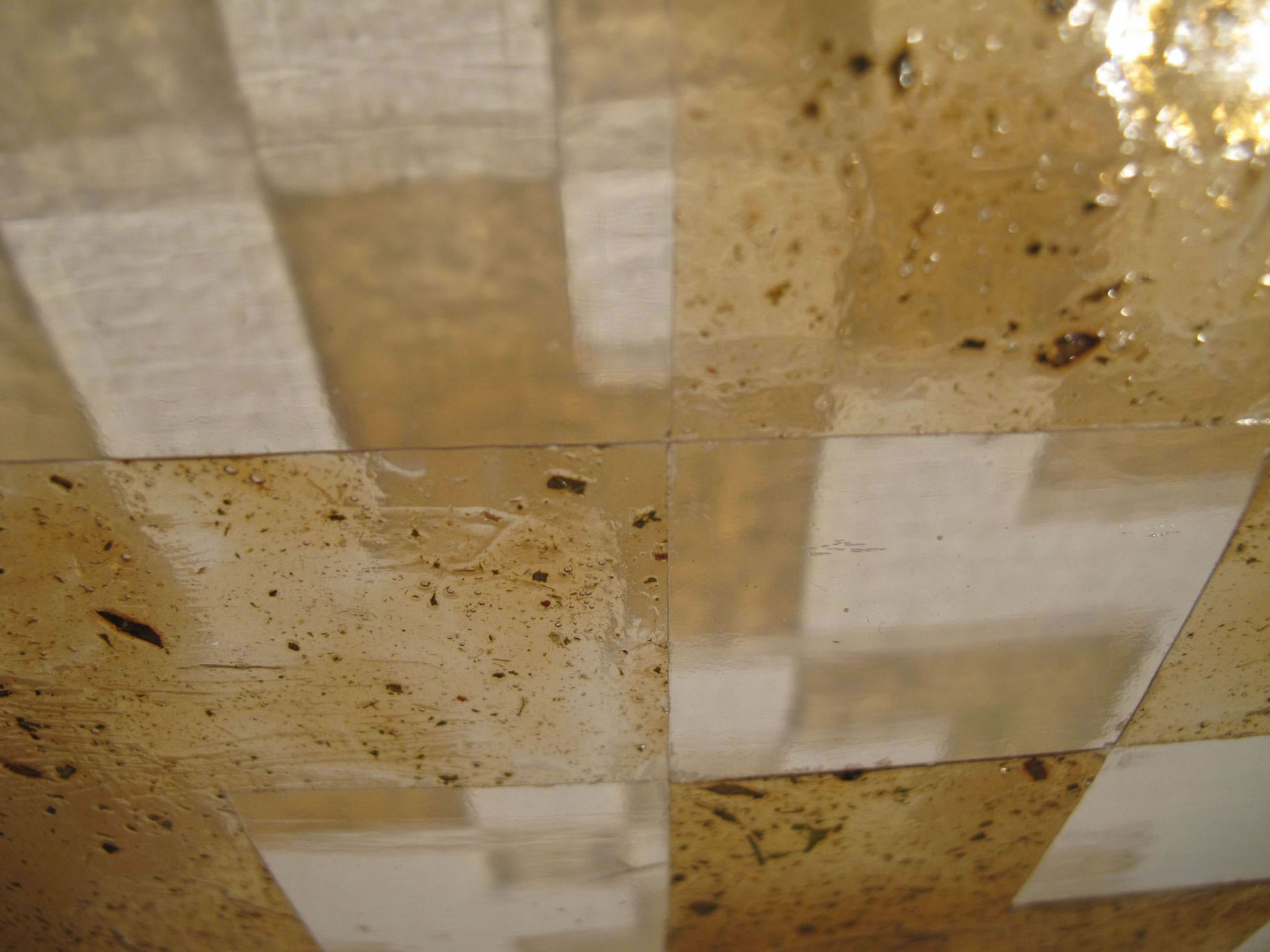 |
|
“Village Watch”, Monti Lai Wai Yi, Water, leaves and mixed media, 183cm x 304cm, 2013 |
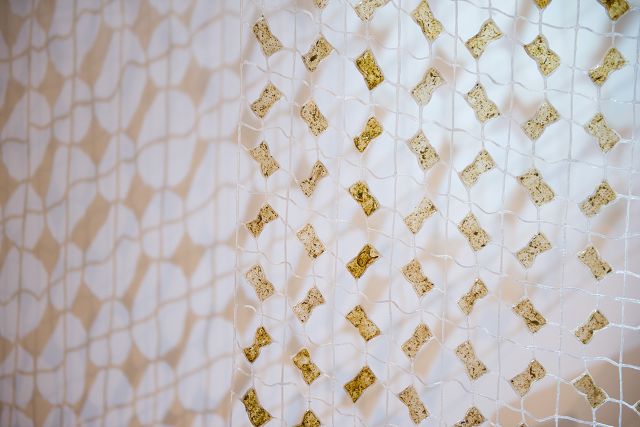 |
|
“Travelling floor”, Monti Lai Wai Yi, Mixed Media Installation, 155cm x 125cm, 2014 |
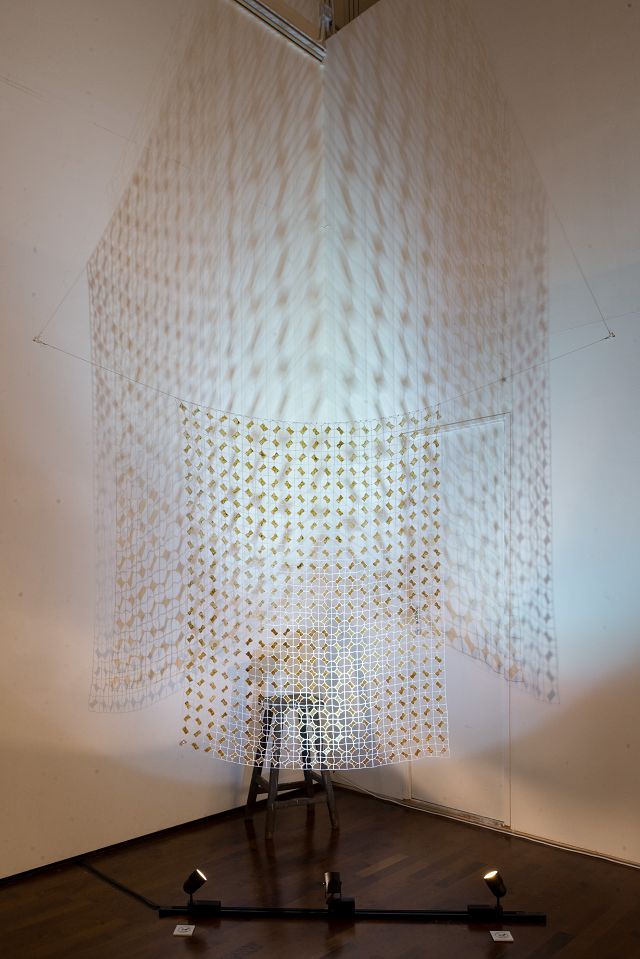 |
|
“Travelling floor”, Monti Lai Wai Yi, Mixed Media Installation, 155cm x 125cm, 2014 |
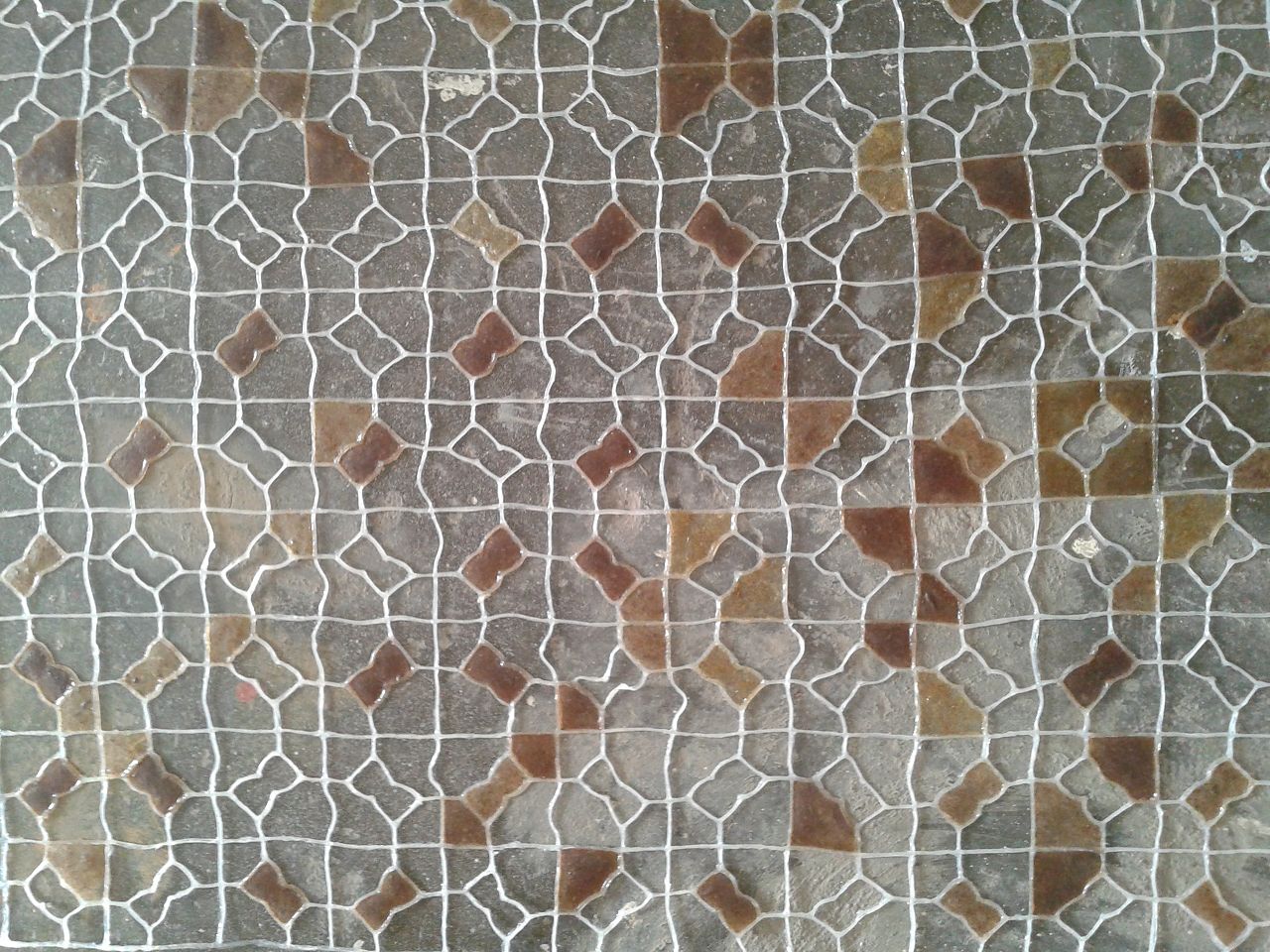 |
|
“Travelling floor”, Monti Lai Wai Yi, Mixed Media Installation, 155cm x 125cm, 2014 |
Lai Chi Wo is a Hakka village with a history of more than 300 years. Because it is located on the border of the New Territories and far away from the urban area, there is no large-scale urbanization development in the village yet. It is one of the few well-preserved traditional villages in Hong Kong, but it is also a forgotten corner of the city. Since the 1960s, the original inhabitants have either been relocated or immigrated, and the farmland in the village has been abandoned for more than 30 years. In 2013, the Center for Civil Society and Governance of the University of Hong Kong launched the "The Sustainable Lai Chi Wo Programme", which cooperated with villagers to restore farmland and revitalize the community. It also convened people from different sectors to build a sustainable rural development model that attempts to resist the rapid disappearance of the countryside.
As an artist, Monti went to Lai Chi Wo to participate in the restoration of farming in July 2014 and moved into the village in November of the same year until 2019. From plowing the soil and planting seedlings, to harvesting and threshing grains, she devoted herself to farming and planting rice every day, and then turned the farming experience into artistic creations. She also co-organized "Touching the Earth - Environmental Art Workshop at Lai Chi Wo" together with two artists Koko Ko and Thomas Yuen, to lead students of different ages to touch and experience Lai Chi Wo in person, and use natural materials for impromptu practice, from sketches, paintings, artworks to interactive installations, to bring people closer to the earth.
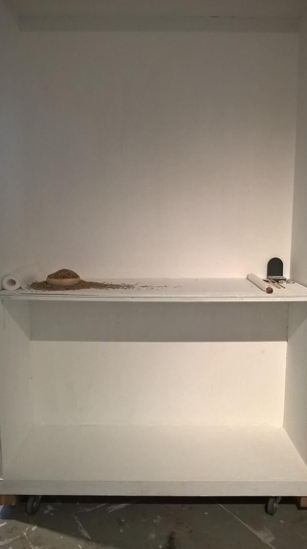 |
|
“Grains Appreciation”, Monti Lai Wai Yi, Mixed media installation, 2015 |
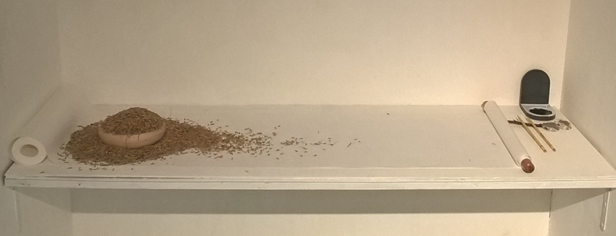 |
|
“Grains Appreciation”, Monti Lai Wai Yi, Mixed media installation, 2015 |
 |
|
“Grains Appreciation”, Monti Lai Wai Yi, Mixed media installation, 2015 |
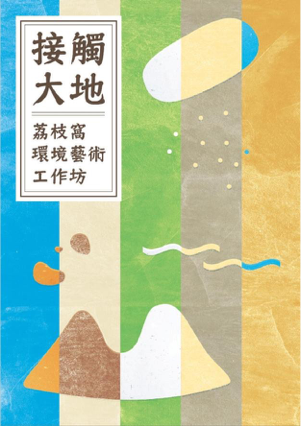 |
|
"Touching the Earth - Environmental Art Workshop at Lai Chi Wo" worksheets. |
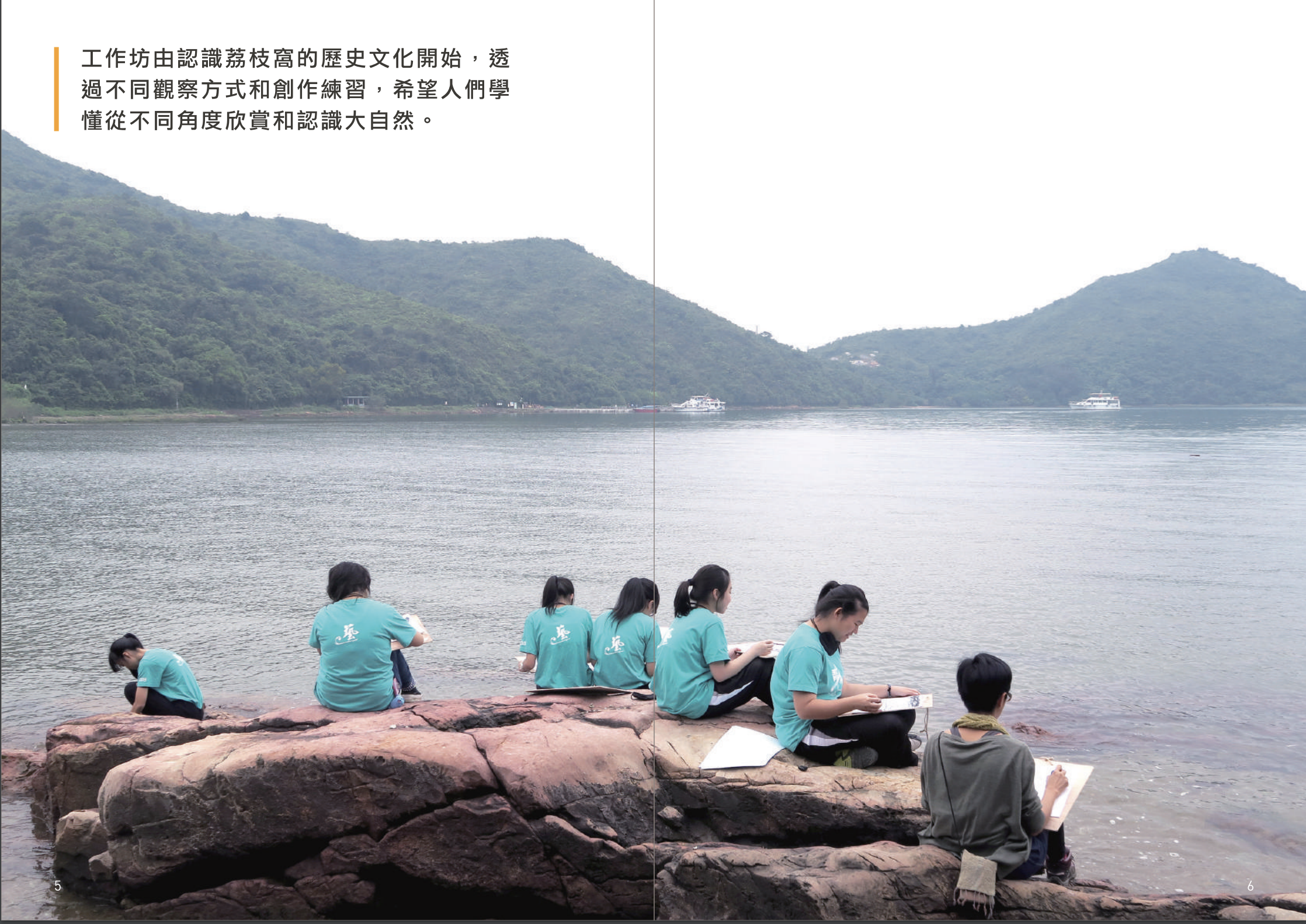 |
|
"Touching the Earth - Environmental Art Workshop at Lai Chi Wo" activity photos. |
Monti is sometimes invited by different institutions as a guest speaker to share her process of turning farming into art. The researcher remembered that one page of Monti's lecture briefing notes quoted a Chinese poem: "When you put green seedlings in the fields, you can see the sky in the water when you lower your head; the six cleansed roots of sensations are the way, and going backward turns out to be moving forward." Written by a monk in the Tang Dynasty [6], the sentence describes the state of the farmer planting rice, that is, although it seems humble to bend your body to work, you can see the blue sky reflected in the water when you lower your head. It is a message to people that sometimes taking a step back can give them more room to move forward.
The researcher asked Monti, why do you need to go back when planting rice? She explained that it is because moving forward will step on the seedlings you just planted.
Agriculture and leaves are things that almost everyone comes into contact with every day. Therefore, Monti thought it was appropriate to use these two as the entry point of art intervention in the community. But at the same time, different from the previous leaf research, after the start of farming, the ultimate goal is no longer limited to artwork or installation, but also crops, management, and sales, which seem to be irrelevant to art. So, what is the relationship between farming and art?
Monti responded without hesitation, feeling that she had already thought deeply about this question, and came up with a firm and precise answer: "Farming is a research method for me, it is a process of enriching the experience. That is, if I am enriched, I can transform it into a creative element or material. In the past five or six years, I have often used plants to tell stories.” She gave an example, she made paper from grasses and uses the paper to record the process of growing rice. "I combined these two things with my planting experience, my desire, and my needs to create."
Are all farmers an artist? Monti believes that the difference lies in self-awareness. "Many farmers would not say that they are artists because they don't have that self-awareness. I convinced myself that because I have this kind of self-awareness, I will see farming as a different thing."
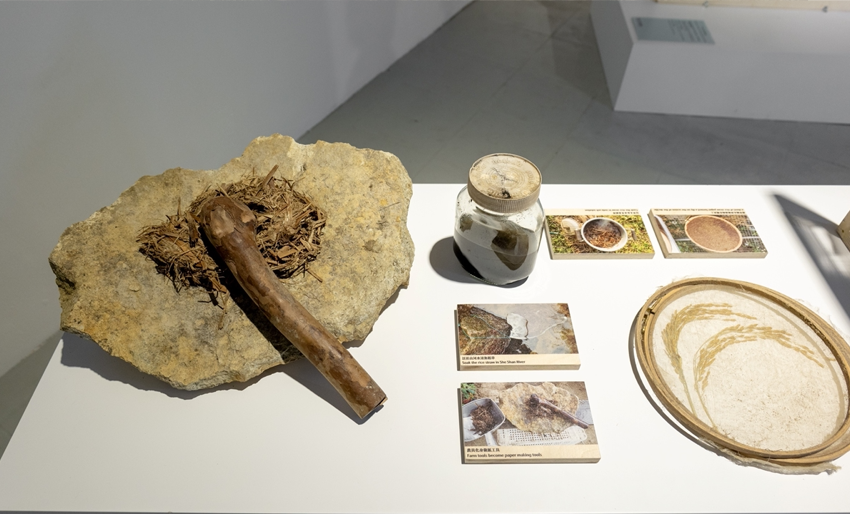 |
|
“A Page”, Monti Lai Wai Yi, Fa Lo Pak rice straw harvest from the midseason in 2020, water from She Shan River, guava wood, soda ash |
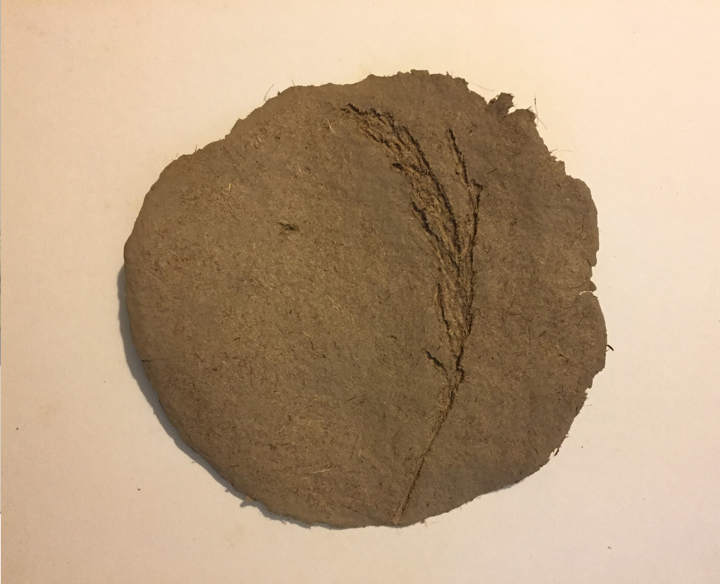 |
|
“A Page”, Monti Lai Wai Yi, Fa Lo Pak rice straw harvest from the midseason in 2020, water from She Shan River, guava wood, soda ash |
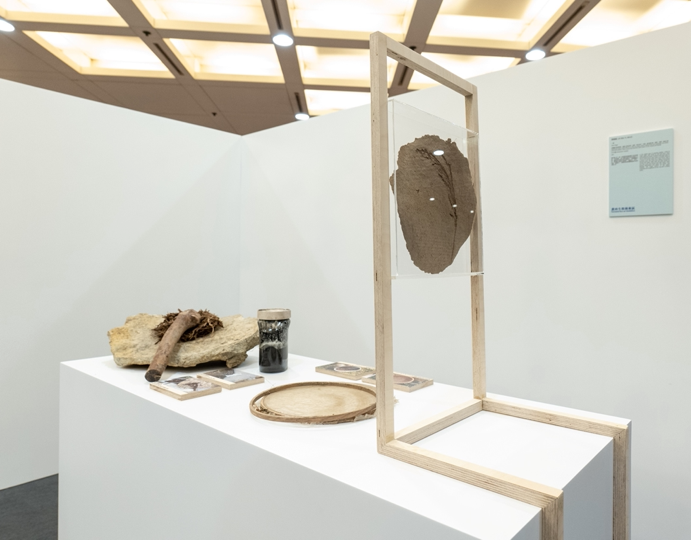 |
|
“A Page”, Monti Lai Wai Yi, Fa Lo Pak rice straw harvest from the midseason in 2020, water from She Shan River, guava wood, soda ash |
Later, Monti took the remaining seedlings from Lai Chi Wo out of the New Territories and brought them to the 18 districts of Hong Kong. She said with a smile that when she was cultivating fields in Lai Chi Wo, she often encountered "enthusiastic" passers-by who pointed out how to plant crops: "Everyone seems to be familiar with cultivating fields and growing rice, so I thought it would be better for me to move the farmland to downtown.” So she started the “Rice in the City” in 2017, planting rice in roadside planters in various districts and making records.
Monti said that in the spring of 2017 (about the summer vacation season), she successfully planted a few crops, but unfortunately, most seedlings have not yet grown up, and have been removed as weeds by the staff of the LCSD. However, she was not discouraged but felt that this plan allowed her to communicate and have a dialogue with the community. The following year, she launched Project 2.0, and instead of "borrowing" government planters, she built a field herself - placing a bucket on an old bicycle and growing rice in the bucket. Unexpectedly, a few days before the exhibition, the bicycle was stolen, but luckily the thief left the bucket. Monti had an idea, she reported the missing bicycle to the police, and showed the loss memo as part of the exhibition.
Since the start of the Lai Chi Wo Project in 2014, Lai has continued to cultivate and organize community art creation workshops. In 2018, she was invited to Tai San Wai, Yuen Long as an artist in residency at the "Fishpond Sustainable Art Festival"; in 2018, she participated in the "Hi! Hill" public art project in Chuen Lung, Tsuen Wan; she has participated in the "Gift from Land" project in Lam Tsuen, Tai Po, to help restore rice in Hong Kong now... Monti has left her creative presence in more and more Hong Kong farmlands and villages, and she admits that she plans to continue farming in the future.
Now, every day at 6:11 when the morning sun begins to appear, Monti will get up and prepare for farming in Lam Tsuen. The researcher asked, what do you want your environmental art to achieve? Monti replied, "I think, as long as it makes people think a little more, I already feel that it is a lot of merits." What do you want the people to think? "I hope the audience and I will think more about the relationship between themselves and the environment. For example, when the roadside planter becomes farmland, how will it change our lives if it is used to grow rice? What are those camouflage elves doing when they walk around? Do they want to bring a message to human beings? Everyone can think from different perspectives. These works are not intended to give answers, but to interpret existing problems in different ways.”
 |
|
“Ramie Garden”, Monti Lai Wai Yi and Co-created by members of Farm Side Art Research Lab,2018 |
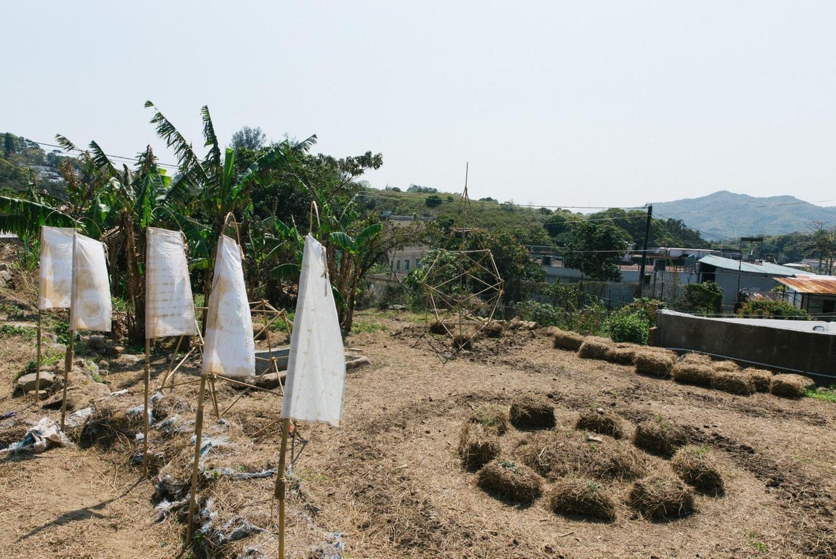 |
|
“Ramie Garden”, Monti Lai Wai Yi and Co-created by members of Farm Side Art Research Lab,2018 |
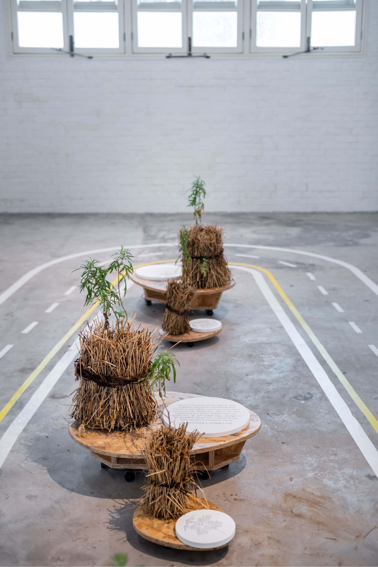 |
|
“A Mugwort Monologue”, Monti Lai Wai Yi, 2020 |
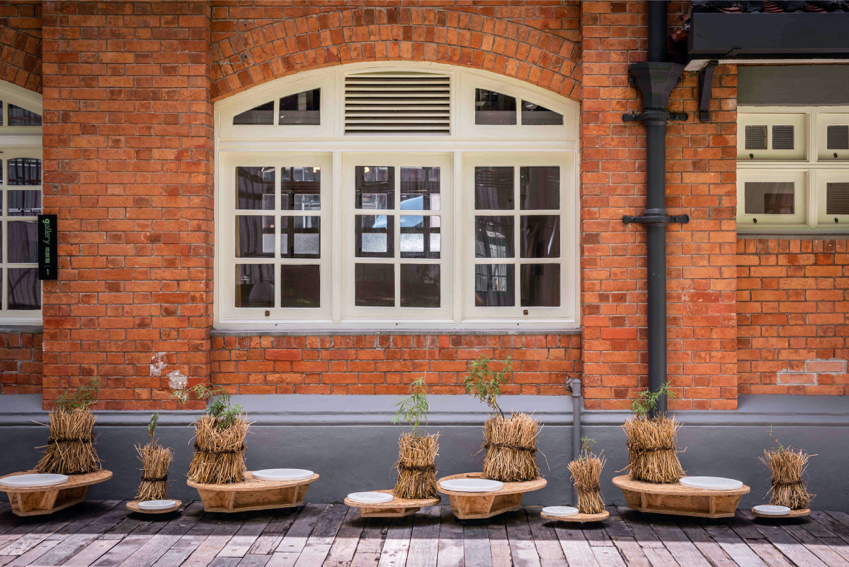 |
|
“A Mugwort Monologue”, Monti Lai Wai Yi, 2020 |
 |
|
“Words of Leaves”, co-created by Monti Lai Wai Yi and Wong Wing Fung, Cotton cloth, bee wax, Site-specific installation,2020 |
 |
|
"Gift from Land" is taking place in Lam Tsuen, Tai Po. It is a plan to recultivate Hong Kong's traditional rice. (Photographed by the research team on September 27, 2021) |
Artist website: https://www.laiwaiyi.net/
© Unless otherwise stated, all photos courtesy of the artist. All rights reserved.